It's not an exaggeration to say that guitar makers as a tribe tend to be pretty conservative. Simply put, the classic electric guitar designs work, and they work very nicely. Why try to predict the future when the present is so safe? You may well ask. But some have tried—and failed—and here we take a look at six of them.
A number of them failed because they were ahead of their time, others were simply pushed aside, and some were clearly bonkers. See if you can tell the difference.
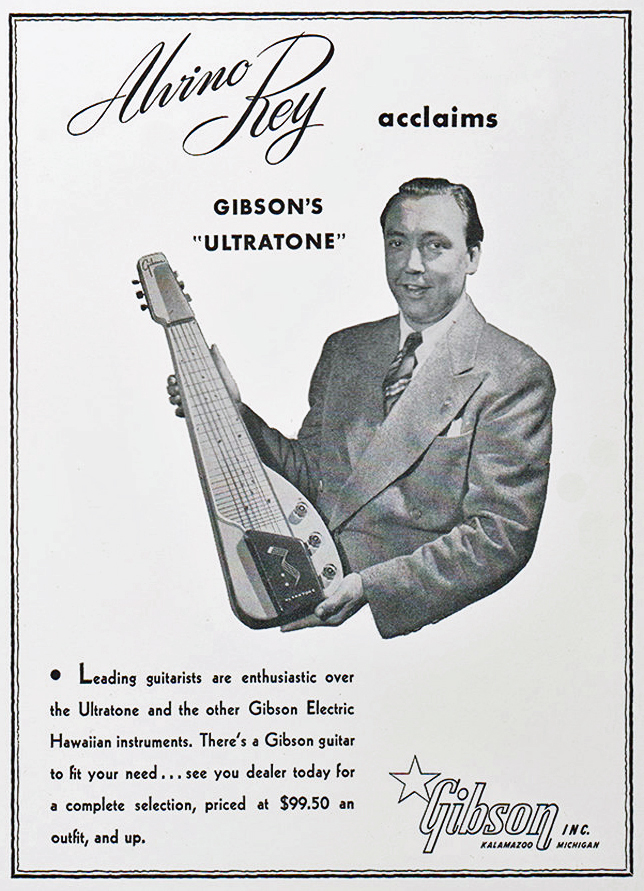
After World War II, Gibson seemed like a Midwest company still leaning heavily on tradition. So it was a surprise when it introduced in 1946 a guitar designed as much with visual impact in mind as musical performance. The Ultratone electric steel was designed for Gibson by Barnes & Reinecke, a Chicago firm of industrial designers, and it was a remarkable object, with sleek lines and prominent use of plastics.
At first known as the BR-1, the Ultratone had a solid maple body "enameled sparkling white." The fingerboard was transparent acrylic plastic, lacquered from below to look silver, with machined fret markers and lacquered position dots in yellow and red (which Gibson called "coral"). An acrylic decorative plate at the headstock, lacquered silver and white with a gold Gibson logo, covered the tuners, which had red plastic buttons injection-moulded by Kluson.
Another plastic cover at the bridge, lacquered red with a stylized motif alongside "Ultratone," revealed a single pickup and combined bridge and tailpiece. Three clear plastic knobs controlled volume, bass, and treble, and the jack was housed in a clear plastic plate at the rear edge behind the bridge. It was an impressive piece of modern musical art.
The Ultratone steel was a dazzling addition to the company's lines, leaping out from the comparatively gloomy looking wood-body steels and Spanish guitars. It's interesting to speculate how things might have gone had Gibson employed Barnes & Reinecke to design its upcoming solidbody electric Spanish guitar, which became the Les Paul Model. The future of electric guitar design might have been very different indeed.
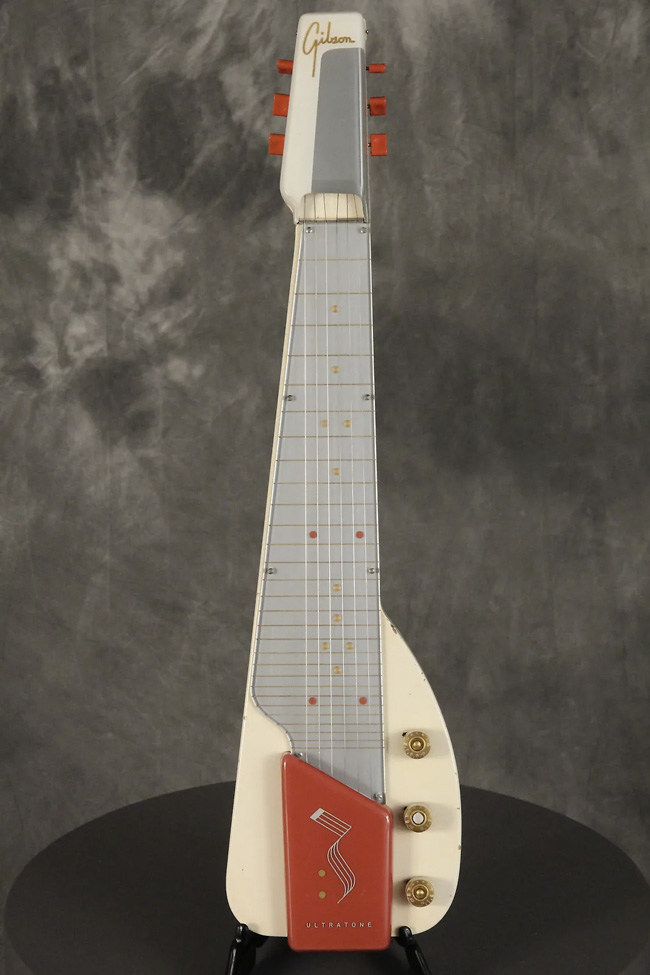
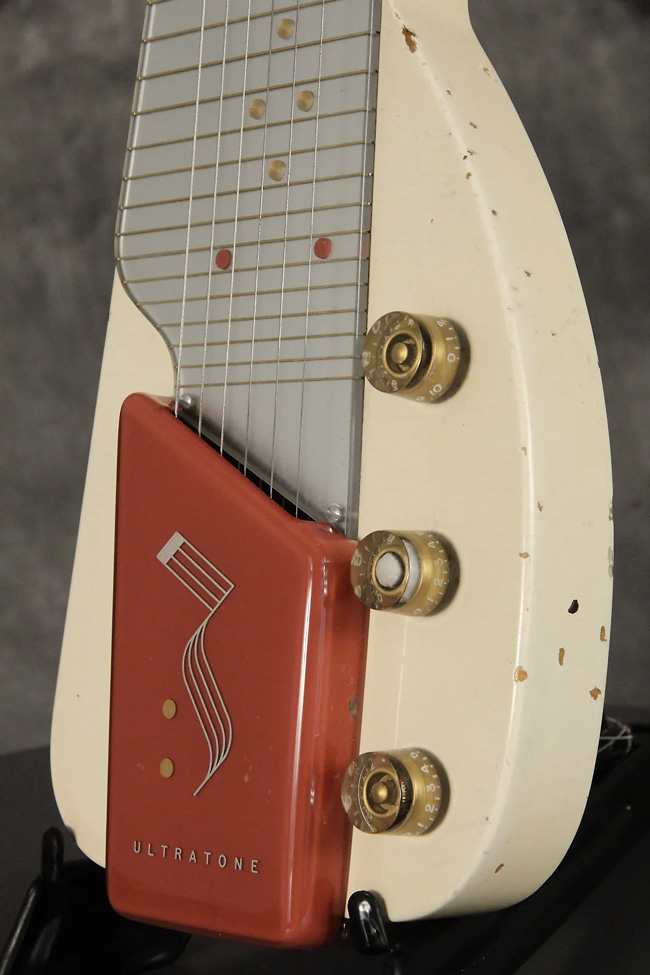
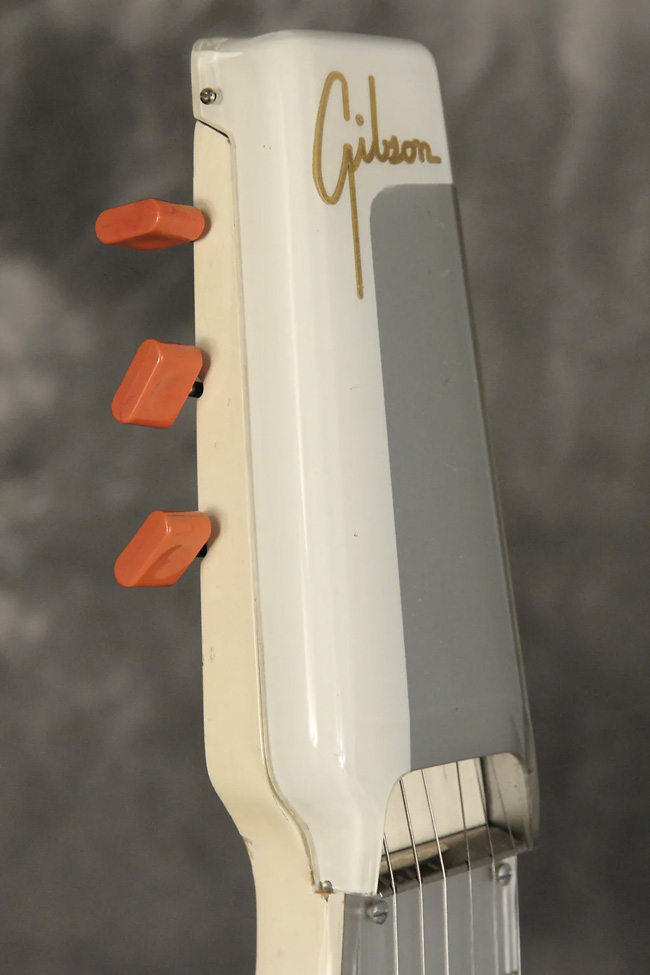
Vox was a brand used by Jennings Musical Industries (JMI), owned by Tom Jennings, who established his Jennings Organ Company in the late '40s and JMI in the early '50s. JMI manufactured and distributed Vox amplifiers, devised by Dick Denney, and the firm's headquarters and factory were at Dartford, to the south-east of London. During 1959, Vox began also to produce guitars. At first these were budget models, but soon Jennings wanted a better instrument and told his in-house designers to produce a fresh design.
They came up with the Vox Phantom, introduced in 1961, which had a five-sided body without any of the curves of conventional designs. In contrast, the next new Vox was notably curvaceous. The Phantom Mk III, later renamed simply the Mark VI, was introduced in 1964. Its nickname, the teardrop, sums up its symmetrical body shape.
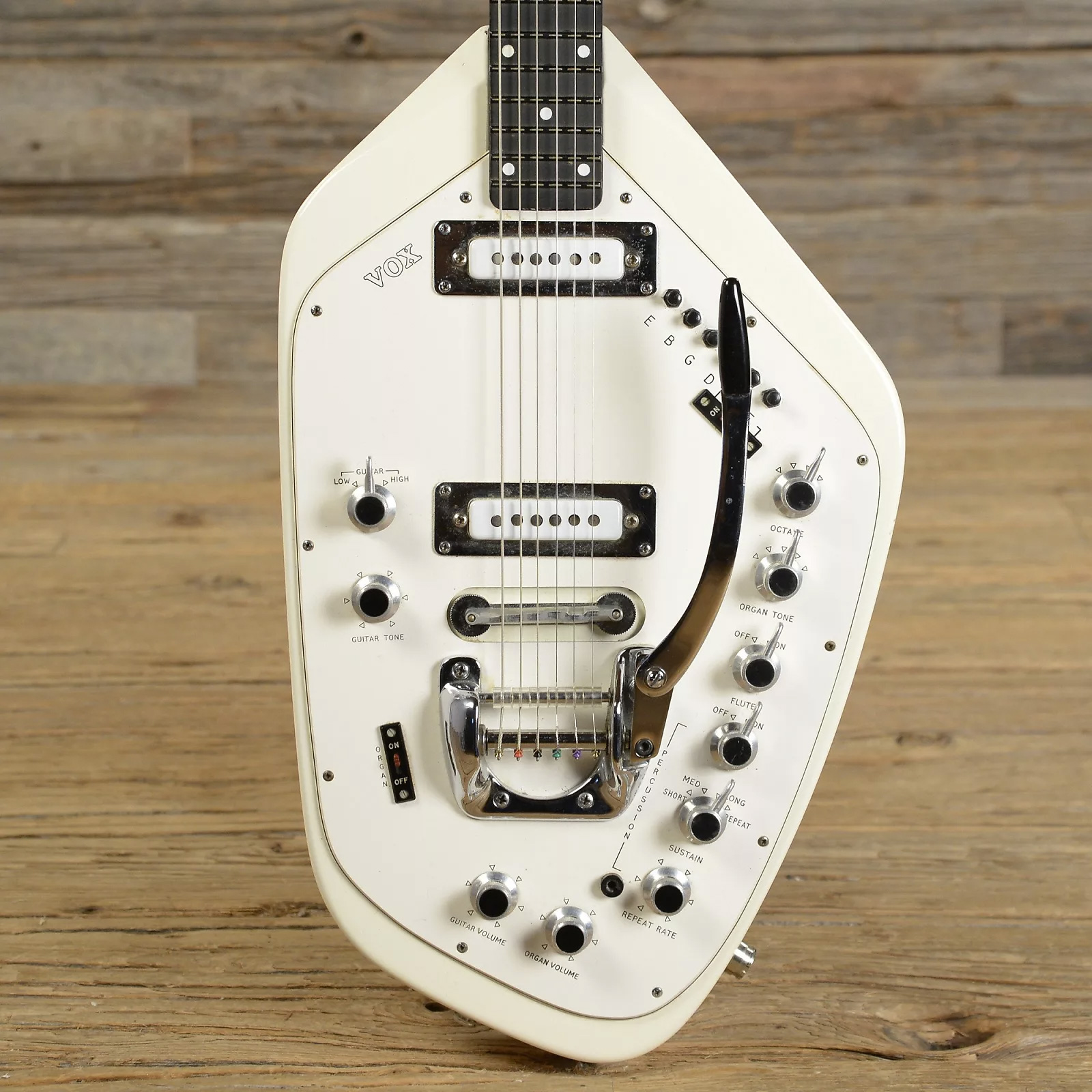
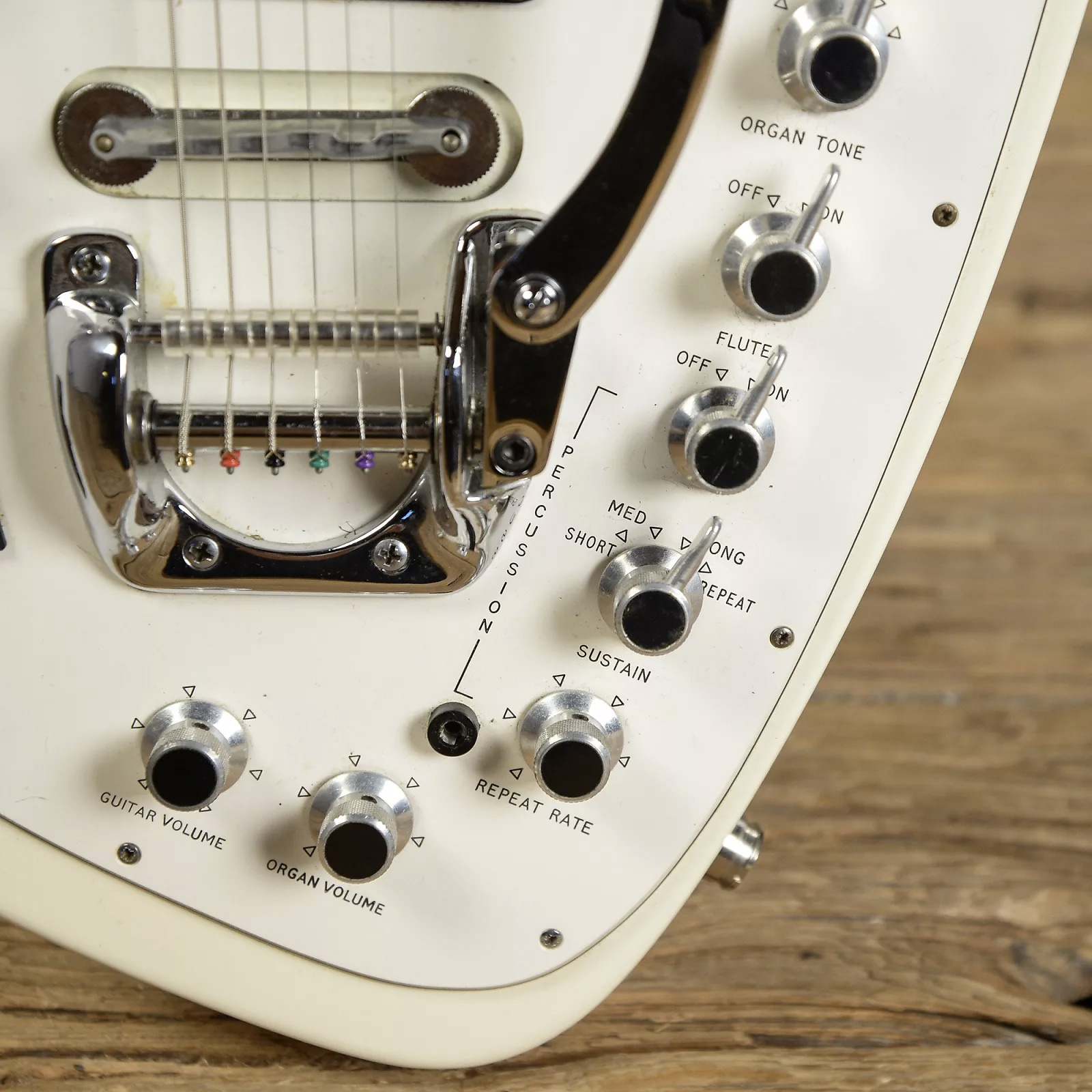
An odd variation of the five-sided Phantom was Vox's Guitar Organ, the brainchild of Denney. It was first marketed in 1964 but did not reach full production until a few years later. The Guitar Organ's frets had special contacts connected to part of the innards of a Vox organ built into the instrument's body. It was intended to offer the player the ability to create organ sounds and guitar sounds, individually or simultaneously. But it was difficult to play, not least because the neck was wider at the nut than at the body. It did not last long, although the regular Phantom and Mark models survived in their original form until about 1968.
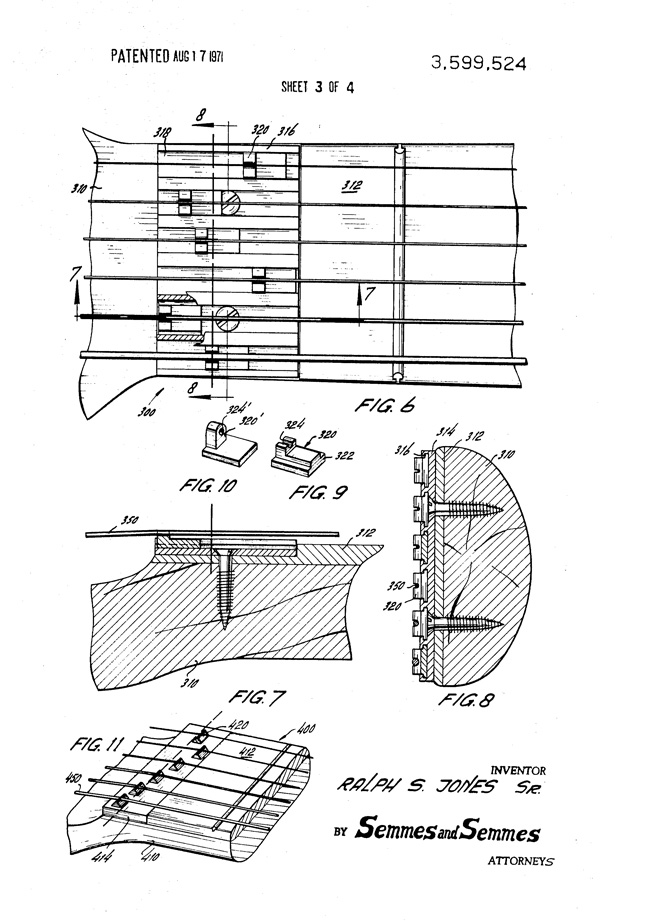
Ralph Jones started Micro-Frets in Frederick, Maryland, in 1967 with several products of his own inventive mind on display. His Micro-Nut allowed adjustment of the string length at the nut, in addition to the bridge, and Jones described this in his patent as "a method and apparatus for correcting the tuning of fretted and non-fretted instruments."
The Calibrato vibrato again centered on tuning accuracy, "a novel combination of individual string bridge and anchor means," and the Tonesponder body used a novel construction method where two wooden halves were joined with metal clips and a masonite-seam gasket. Micro-Frets guitars had a very thin Speedline neck, and it would be remiss to overlook an optional finish called Martian Sunburst, a sort of green to natural effect.
Jones' most significant move came in 1968 with the Orbiter model, which had a built-in FM transmitter and an antenna on the upper horn. He got the idea from the growing popularity of wireless control for home garage doors. His was the first wireless system for a guitar—something we take for granted today, but at the time it must have seemed like magic. The outfit came with the necessary FM receiver, designed to plug into your amp and sit on top of it.
The wireless system was also offered on other models, but very few were made. Wireless connections are everywhere today, of course, and it's a pity Ralph Jones did not live to see them. He died in 1972, and the original Micro-Frets business collapsed soon afterward.
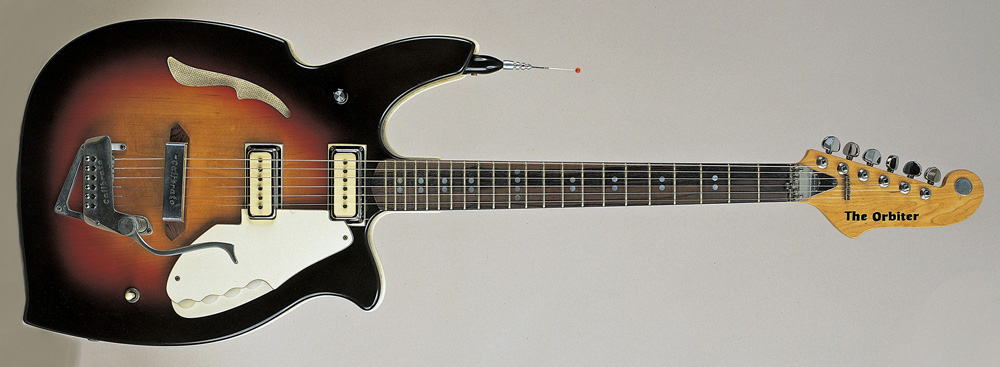
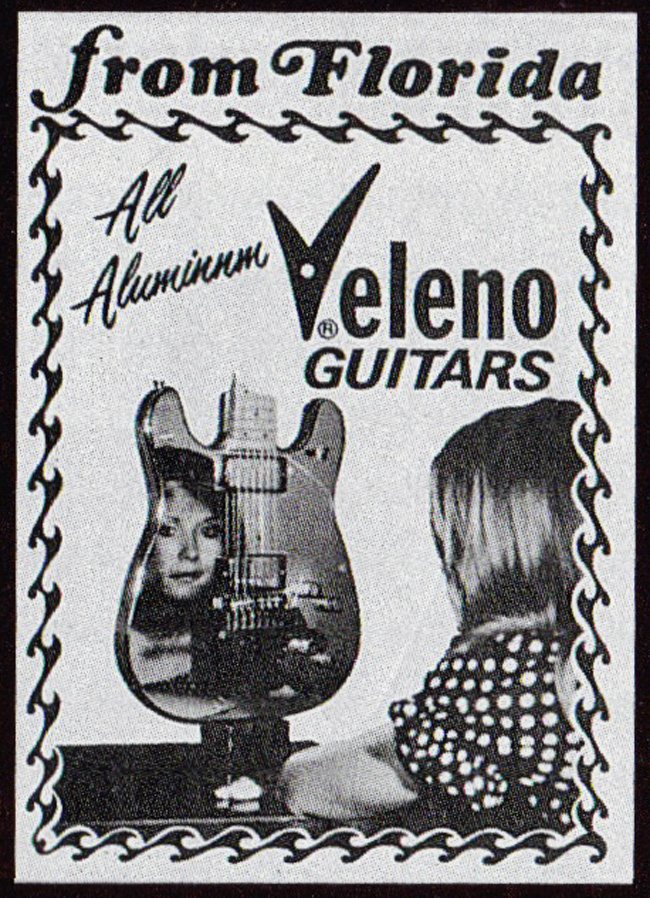
John Veleno wasn't the first to use metal for a guitar—think National for bodies, Wandrè for necks—but he was among the first to apply the idea to more or less the whole of an electric instrument. Based in St. Petersburg, Florida, Veleno began building his unusual guitars around 1970, making them almost entirely from hollow aluminum, with cast necks and hand-carved bodies, and finishing them in bright anodized colors, including gold. As a distinctive touch, some of them had a V-shape headstock into which Veleno set a small corundum ruby.
Veleno's primary model was the Original, and he knew that one of the advantages of the rigid metal construction was good sustain. The neck had no need for a truss rod and was guaranteed never to warp, and it was said that the guitar could be stored for relatively long periods without relaxing the tension of the strings. A further benefit of the aluminum body, Veleno claimed, was that it naturally shielded the electrical components from outside interference.
A second all-aluminum Veleno model was the 24-fret Traveler mini guitar, which measured just over 27 inches from top to tail. Demand for this proved even less than for the Original, and very few were sold. Travis Bean and Kramer developed a taste for aluminum necks later in the '70s, possibly influenced by Veleno's efforts, but Veleno's own operation didn't last long. He stopped production in 1977 after building around 185 guitars and became a wedding photographer, a much more predictable business.
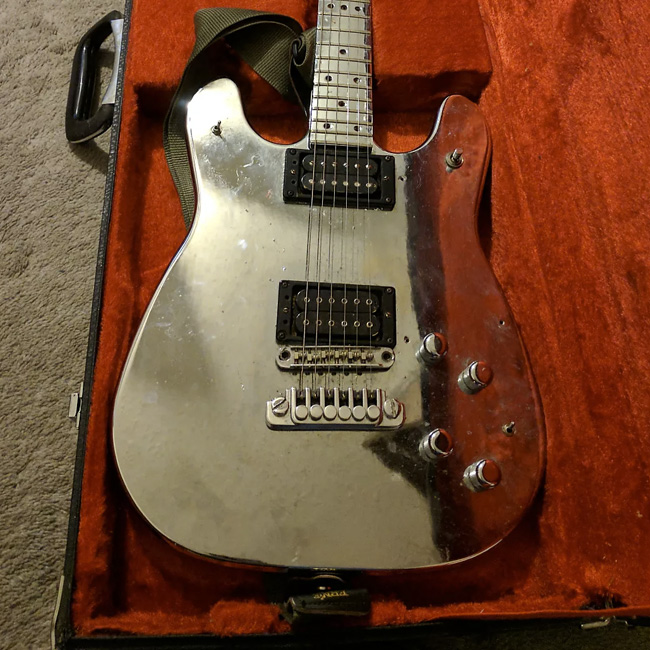
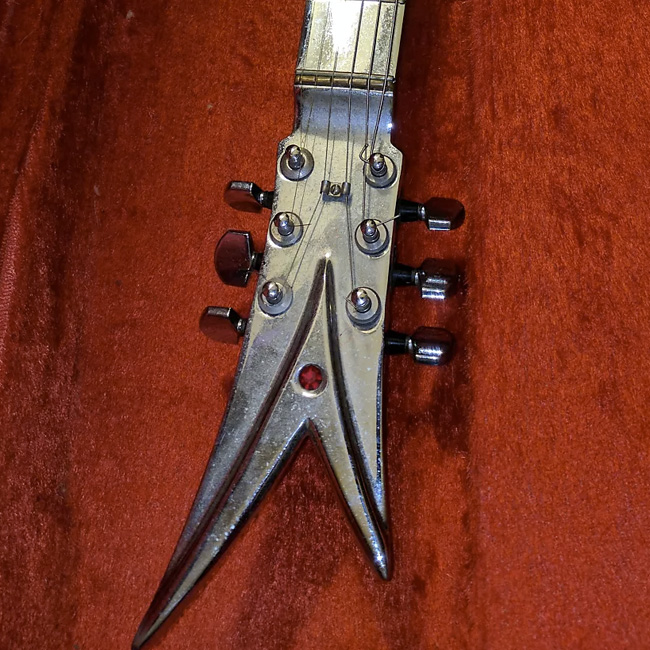
Following some early attempts in the mid '70s, there were a number of creations in the '80s designed to link a guitar and a synthesizer. The most remarkable of these was the SynthAxe, a bizarre British concoction introduced in 1984. The press release said it was "not a guitar, nor a guitar synthesizer—it is a new type of musical instrument which gives a guitar player the means to plug into and play a variety of synthesizers."
The instrument's designers, Bill Aitken and Mike Dixon, were unimpressed by the pitch-to-voltage converters used by earlier guitar synths, which sensed string vibration. Instead, they designed the SynthAxe to detect every nuance of a guitarist's techniques, including touch and bending, and convert these to MIDI signals.
The frets on the SynthAxe's fingerboard were equally spaced and the strings on the long angled neck were not tuned to pitch. They were there to be sensed, not to make particular vibrations. There was a shorter set of pluckable strings on the body, plus six pressure- and velocity-sensitive keys that could trigger strings and enhance and alter their sound, along with three more controller pads. There was a vibrato-like arm, too, for pitch variation. The body itself was a piece of fiberglass—sculpted and un-guitar-like—with a cast metal chassis inside.
The SynthAxe was short-lived. Its high price tag of around $12,000 and the unconventional playing techniques it demanded meant that the majority of players ignored it. Fewer than one hundred were sold.
Gibson's ex-CEO Henry Juszkiewicz always wanted to make the electric guitar into a modern object full of modern technology. When in late 2010 he smashed a guitar on stage at New York's Hard Rock Cafe during the launch of the Firebird X, some of the audience might have felt this was a fitting metaphor to mark the end of the electric guitar as we know it. Perhaps he should have smashed the Firebird X instead.
Four years earlier, Gibson began shipping its long-promised digital guitar, the HD.6X-Pro, a Les Paul with extra hex pickup that allowed the player to feed various combinations of strings to a computer for use with recording software. The next tech step came in 2007 with a series of Robot guitars. Various regular Gibsons were offered with the Robot self-tuning system, which used powered tuning pegs, an auto-tuning bridge, and a data-transmitting tailpiece to provide standard tuning plus six programmable tunings. The system was later redesigned as a self-contained unit mounted on the rear of the headstock, called Min-ETune and then (currently) G Force.
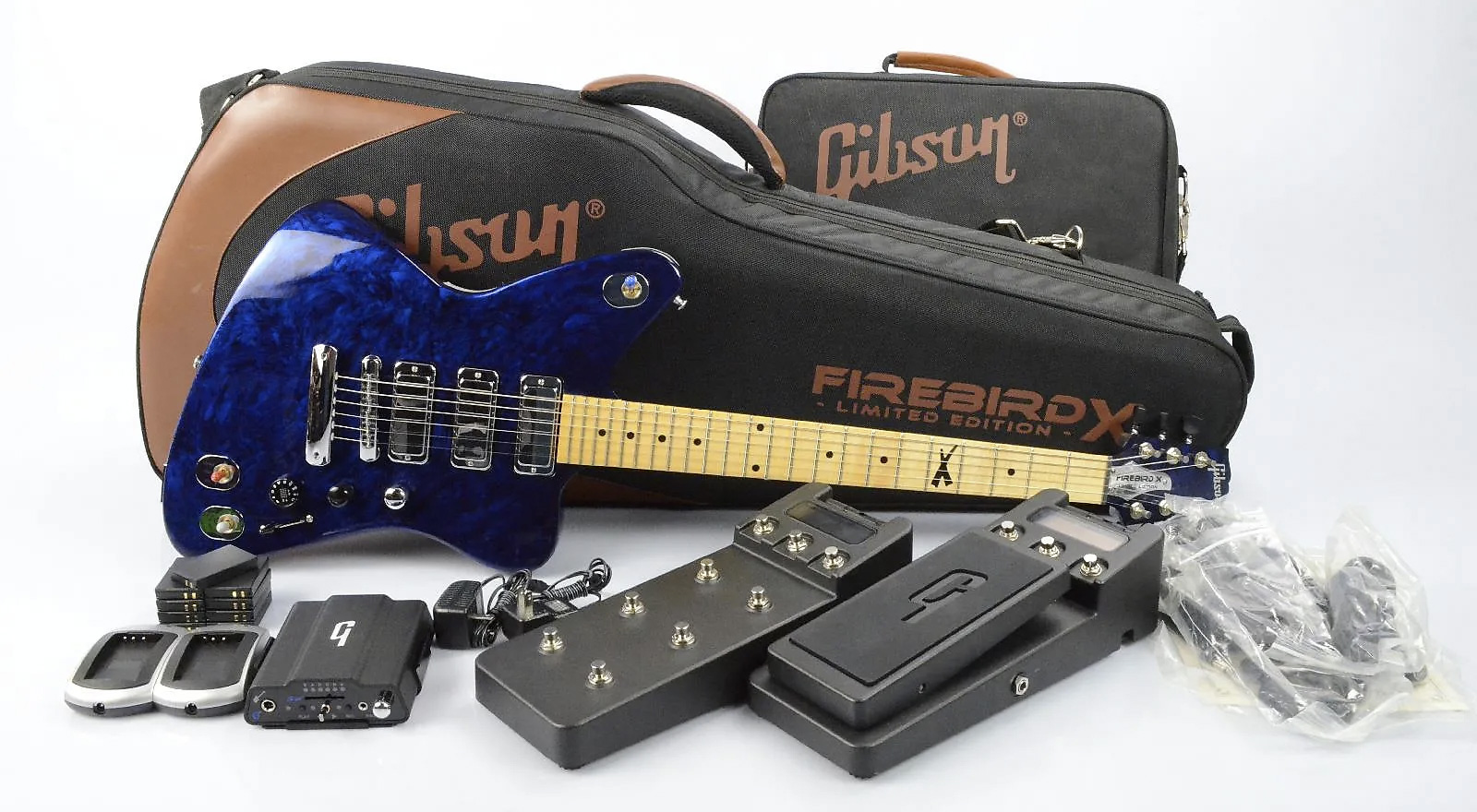
Gibson's Dark Fire and Dusk Tiger guitars followed, and then in 2011 that peculiar Firebird X, a baffling take on a non-reverse Firebird. It had the Robot tuning, three multi-magnet pickups, a system to store, play, and edit 55 preset tones from among the onboard effects and models, computer connection through USB, and two Bluetooth'd controller pedals—among other things. Guitarists were baffled and have generally stayed away. Let's hope Gibson's new owners have taken note of this period of the company's recent history.
About the Author: Tony Bacon writes about musical instruments, musicians, and music. He is a co-founder of Backbeat UK and Jawbone Press. His books include Fuzz & Feedback, The Ultimate Guitar Book, and Million Dollar Les Paul. His latest is a new edition of Electric Guitars: The Illustrated Encyclopedia. Tony lives in Bristol, England. More info at tonybacon.co.uk.

